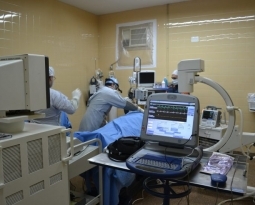Idaho Patent of the Month – April 2024
In the realm of sustainable materials, BioLogiQ Inc. is pushing boundaries with a newly patented invention that aims to revolutionize nonwoven material production. Their method involves melt blowing a composition containing a starch-based polymeric material to produce thin fibers, offering a sustainable alternative to traditional petrochemical-based plastics.
The key to this innovation lies in the starch-based polymeric material’s unique characteristics. With a crystallinity of less than 20% and resistance to recrystallization, this material overcomes the limitations that have hindered the successful incorporation of starch into nonwoven materials in the past. Moreover, the composition exhibits a shear viscosity of above 50 Pa·s and no more than about 200 Pa·s at 190°C, ensuring stability during the melt blowing process.
BioLogiQ’s method allows for the inclusion of starch-based polymeric materials with high molecular weights, up to 60 million g/mol, significantly higher than what has been achieved in previous attempts. This breakthrough opens up new possibilities for incorporating renewable components into nonwoven materials without sacrificing mechanical properties or processing efficiency.
By blending the starch-based polymeric material with thermoplastic polymers, BioLogiQ achieves a synergistic effect that enhances the overall strength and performance of the resulting fibers. This blending process also offers flexibility in tailoring the composition to meet specific application requirements, whether in diapers, sanitary napkins, disposable drapes, or other products.
One of the most remarkable aspects of BioLogiQ’s invention is its ability to produce fibers with diameters ranging from 2 μm to 10 μm, suitable for a wide range of applications. This versatility, combined with the sustainability of the materials used, makes it a game-changer in the field of nonwoven material production.
BioLogiQ Inc.’s innovative method for producing nonwoven materials using starch-based polymeric materials marks a significant advancement in sustainable material science. With its potential to transform various industries, from healthcare to consumer goods, this invention represents a promising step towards a more sustainable future.
Are you developing new technology for an existing application? Did you know your development work could be eligible for the R&D Tax Credit and you can receive up to 14% back on your expenses? Even if your development isn’t successful your work may still qualify for R&D credits (i.e. you don’t need to have a patent to qualify). To find out more, please contact a Swanson Reed R&D Specialist today or check out our free online eligibility test.
Who We Are:
Swanson Reed is one of the U.S.’ largest Specialist R&D tax advisory firms. We manage all facets of the R&D tax credit program, from claim preparation and audit compliance to claim disputes.
Swanson Reed regularly hosts free webinars and provides free IRS CE and CPE credits for CPAs. For more information please visit us at www.swansonreed.com/webinars or contact your usual Swanson Reed representative.

















